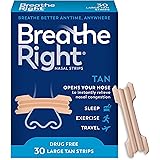The Ultimate Guide to Sleeping Pads vs. Air Mattresses: Choosing Your Ideal Camping Comfort
Are you pondering the perfect sleeping solution for your next outdoor adventure? As the video above expertly introduces, the choice between a sleeping pad vs. air mattress can significantly impact your camping experience. Both options promise a better night’s rest under the stars, but they cater to very different needs and preferences. Understanding their unique characteristics is crucial for making an informed decision, ensuring your nights are as rejuvenating as your days. Let’s dive deeper into these essential camping companions.
Understanding Your Camping Sleep System
Before pitting these two titans of outdoor comfort against each other, it’s helpful to understand what each brings to your campsite. A good night’s sleep is the bedrock of any successful outdoor excursion, whether you’re summiting peaks or simply enjoying a tranquil lakeside retreat. Your choice of sleeping gear plays a pivotal role in this, influencing everything from your pack weight to your warmth in chilly conditions. It’s more than just a place to lie down; it’s an integral part of your personal sleep system in the wild.
What Exactly is a Sleeping Pad?
A sleeping pad is essentially an insulated mat designed to be placed directly beneath you, providing both cushioning and crucial thermal insulation from the cold ground. Think of it as a personal cocoon of comfort, separating you from the earth’s chill. These versatile mats come in a spectrum of designs, including lightweight closed-cell foam pads that are virtually indestructible, and self-inflating pads that blend foam and air for quick setup. High-performance inflatable pads, often utilizing advanced baffle designs and insulation technologies, offer superior comfort and warmth while remaining remarkably compact when deflated. The most critical metric for a sleeping pad, especially in colder climates, is its R-value, a numerical rating indicating its thermal resistance. A higher R-value signifies better insulation, making it akin to choosing a warmer coat for your body.
Unpacking the Air Mattress
Conversely, an air mattress is an inflatable bed, typically constructed from PVC, nylon, or other durable synthetic materials. These are designed to mimic the feeling of a traditional bed, offering significant loft and a soft, yielding surface. Air mattresses generally require an air pump for inflation, with options ranging from simple hand or foot pumps to integrated electric pumps that can inflate the mattress with the push of a button. They are often larger and thicker than sleeping pads, providing a substantial barrier between you and the ground. For many car campers or those setting up a comfortable basecamp, an air mattress transforms a tent into a luxurious bedroom, providing ample space to stretch out and move around freely.
10 Key Distinctions for Informed Camping Gear Choices
Now that we’ve grasped the fundamentals, let’s dissect the core differences between sleeping pads and air mattresses. This detailed comparison will illuminate why one might be a superior choice over the other depending on your specific camping style and priorities. Each factor serves as a crucial consideration when outfitting yourself for the great outdoors, helping you navigate the array of options available.
1. Weight, Thickness, and Portability: The Backpacking Imperative
Sleeping pads are generally designed with portability in mind, prioritizing minimal weight and bulk. They are significantly thinner and lighter, often packing down to the size of a water bottle or even smaller for inflatable models. This compact nature makes them indispensable for activities like backpacking, thru-hiking, or mountaineering, where every ounce and cubic inch of space is meticulously accounted for. An air mattress, on the other hand, is a much heavier and bulkier proposition, even when deflated. Its larger dimensions and often more robust materials mean it occupies considerably more space in your vehicle or gear bag, making it a far better fit for car camping where weight and size constraints are less restrictive. Think of a sleeping pad as a sleek, ultralight sports car, while an air mattress is more akin to a comfortable, spacious SUV—each excels in its intended environment.
2. Comfort Levels: A Soft Embrace or Firm Foundation?
When it comes to pure plushness, air mattresses typically win the comfort contest with their softer, more bed-like feel. They allow you to sink in, distributing your weight evenly and providing a sensation closer to sleeping on a traditional mattress. Many air mattresses feature internal coil-beam construction or other baffle systems to provide stable support and prevent a “bouncy” or “hammock” effect. Sleeping pads offer a different kind of comfort: a firm, supportive surface combined with insulation. While not as soft, modern inflatable pads can be surprisingly comfortable, offering customizable firmness by adjusting the air pressure. This provides stable support, which can be preferable for back sleepers or those needing more spinal alignment. It’s a choice between the cloud-like float of an air mattress and the grounded support of a quality sleeping pad.
3. Inflation Methods: Manual Effort vs. Mechanical Ease
The method of inflation varies significantly between the two. Many sleeping pads can be inflated manually by mouth, though some come with integrated hand pumps or require small external pumps. Self-inflating pads simplify this by drawing in air when unrolled, requiring only a few breaths to top them off. Air mattresses, due to their larger volume, almost always necessitate an air pump. These can be battery-operated, rechargeable, or even built directly into the mattress itself, offering remarkable convenience. The choice often comes down to energy conservation: using your breath for a small pad or relying on technology to swiftly set up a larger air mattress, especially after a long day on the trails.
4. Versatility Beyond the Tent: Multi-functional Gear
Sleeping pads boast a wider range of uses beyond just providing a sleeping surface. A closed-cell foam pad can double as a comfortable sitting mat around the campfire, an impromptu yoga or meditation mat, or even as an additional layer of insulation under another pad in extreme cold. Their durable nature means they can withstand rougher treatment. Air mattresses, while undeniably comfortable for sleeping, are primarily designed for that singular purpose. Their size and delicate nature (compared to foam pads) make them less suitable for alternative uses, though they can certainly serve as extra bedding for guests at home. It’s about choosing between a specialized luxury item and a multi-purpose workhorse.
5. Price Point: Budgeting for Your Outdoor Slumber
Generally, sleeping pads are more affordable than air mattresses, especially at the entry-level. A basic closed-cell foam pad can be purchased for a modest sum, offering an economical entry into comfortable outdoor sleeping. As you move into more advanced inflatable pads with higher R-values and lighter materials, prices can rise significantly, sometimes surpassing mid-range air mattresses. Air mattresses, particularly those with built-in pumps or queen-size dimensions, tend to have a higher initial cost. While both categories have premium options, getting a functional and comfortable sleeping pad often requires less financial outlay. Your budget, coupled with the desired level of comfort and performance, will largely guide this decision.
6. Surface Adaptability: Ground Rules for Your Gear
Sleeping pads exhibit remarkable adaptability to various terrains. They can be placed directly on hard floors, uneven ground, rocky surfaces, or soft grass without significant risk of damage, thanks to their robust materials or inherent flexibility. Many pads are designed to endure the ruggedness of the backcountry. Air mattresses, however, perform best on relatively smooth, level surfaces like tent floors, concrete, or asphalt. Their inflatable structure makes them more susceptible to punctures from sharp objects, sticks, or stones hidden on uneven ground. Using a ground tarp or footprint is almost a necessity with an air mattress to protect its delicate underside, much like providing a smooth runway for a delicate aircraft.
7. Insulation in Cold Weather: Your Barrier Against the Chill
This is where sleeping pads truly shine, particularly those designed for colder conditions. They excel at providing insulation from the ground, which is often the primary source of heat loss while sleeping outdoors. As mentioned, the R-value is critical; a pad with an R-value of 4-5 is suitable for three-season camping, while an R-value of 6 or higher is recommended for winter expeditions. Air mattresses, filled mostly with uninsulated air, can actually become a conduit for heat loss. The cold ground cools the air inside the mattress, and this cold air can then draw heat away from your body through convection. While some air mattresses include thin layers of insulation, they are generally not as effective as dedicated sleeping pads in combating significant cold. For truly frigid nights, a high-R-value sleeping pad is a non-negotiable component of your sleep system.
8. Sleeping Bag Synergy: Enhancing Your Sleep System
Sleeping pads and sleeping bags are designed to work in tandem, forming a cohesive sleep system. A sleeping pad provides the necessary insulation *underneath* your sleeping bag, preventing cold spots where your body compresses the bag’s loft. This ensures the sleeping bag’s insulation remains fully effective, maximizing its warmth. Air mattresses, while comfortable, do not offer the same thermal connection. Because they are so plush and often taller, your sleeping bag rests on top of them without the direct thermal barrier from the ground that a pad provides. While you can certainly use a sleeping bag on an air mattress, the synergistic effect of enhanced insulation and warmth is primarily achieved with a proper sleeping pad. It’s about optimizing the entire system for maximum warmth and efficiency.
9. Variety in Sizes and Shapes: A Custom Fit for Every Camper
Sleeping pads are available in a remarkable array of sizes and shapes to suit diverse body types and camping needs. You can find short pads for ultralight minimalist trips, regular and long sizes, wide versions for broader shoulders, and even mummy-shaped pads that taper to conserve weight and space. This customization ensures a snug fit within a tent or bivy. Air mattresses, by contrast, tend to adhere to more standard bedding dimensions: twin, full, queen, and sometimes king. While this provides ample room for individuals or couples, it offers less variability in unique shapes or sizes for specialized camping scenarios. The greater diversity in sleeping pads allows for a more tailored and efficient sleep setup, particularly when space is at a premium.
10. Durability and Longevity: Built for the Wild or the Backyard?
The durability of sleeping pads can vary widely by type. Closed-cell foam pads are virtually indestructible, shrugging off punctures and tears with ease, making them excellent for rugged use. Self-inflating and inflatable pads, while more susceptible to punctures, are typically made with tough nylon or polyester fabrics and often come with repair kits for field fixes. They are designed for repeated use in varied outdoor conditions. Air mattresses, often made from PVC with flocked tops, are generally less durable than a good quality sleeping pad. They are more prone to punctures, especially when used on rough terrain, and can develop leaks over time at seams or valve connections. While repair kits are common, their overall longevity in demanding outdoor environments may be shorter compared to a robust sleeping pad. Choosing between them involves balancing immediate comfort with long-term resilience in the face of nature’s challenges.








